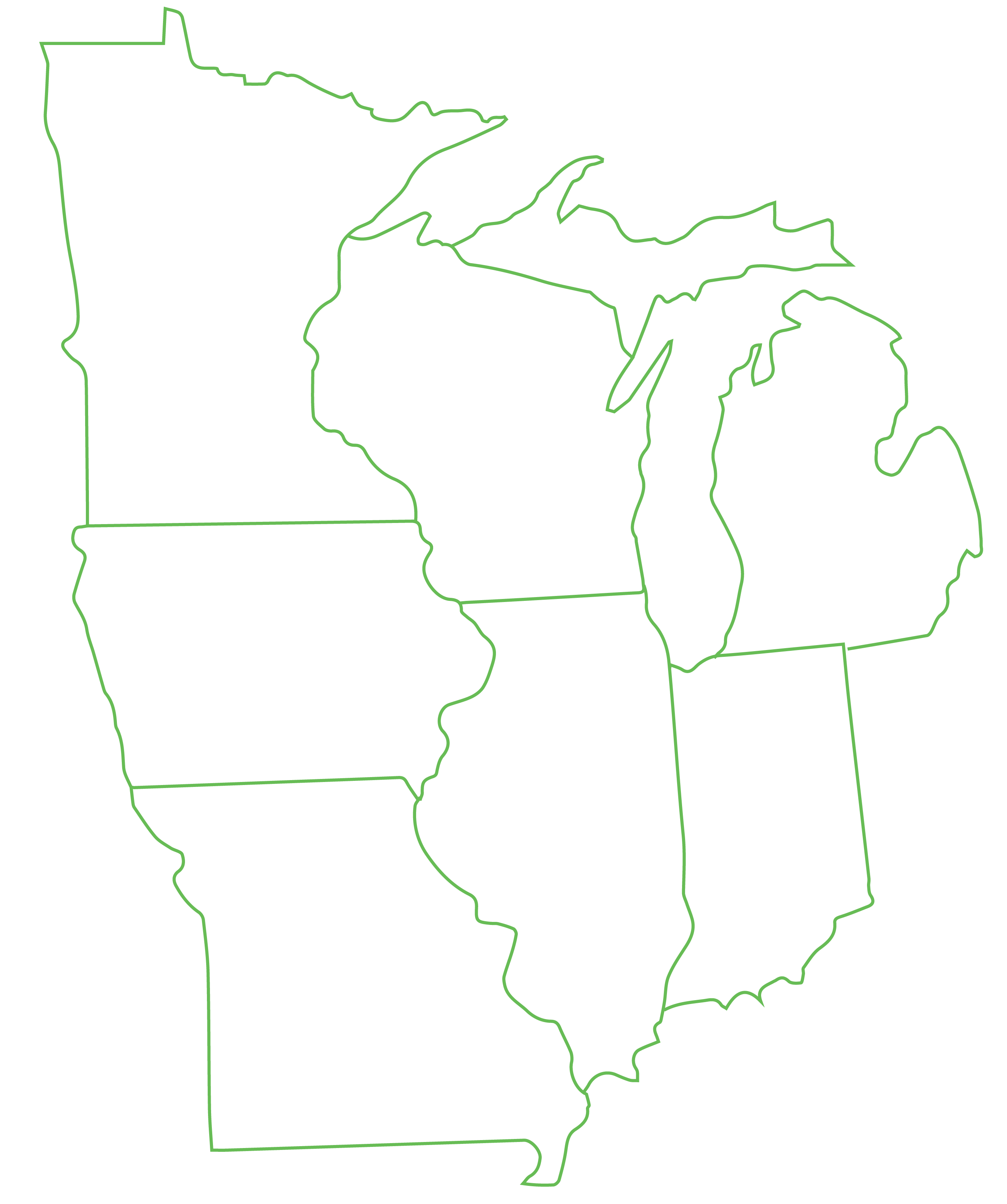Notes on Commute
In the spring of 2023, I wrote a longer poem called “Commute” which was published in Pangyrus Magazine the following December. This essay is an attempt at checking in on where I was then and where I am now. This is something I’ve wanted to try for a few years: to focus not so much on the craft details in mind but the poetic landscapes I frequent that create the form. To share with you the interior landscapes that predate the poem. “Commute,” as the title suggests, is about the daily procession of waking up, taking the dog out, getting ready, and getting in the car to drive 25 miles to work 5 days a week. I live in a rural village in the heart of Wisconsin’s organic dairy industry; this region of southwestern Wisconsin is called the Driftless, due to an ancient decision made by the glaciers to spare the area their geological flattening. This is a commute where wildlife dominates and—for me at least—the antidote to many of my former miseries associated with American city life. It is peaceful here.
Winter stasis, pigeons bubbling nearby. A beloved tree is listening, listening to all
of it. I pass the watercress pool almost daily, the spring is formal, always warm to
sandwich my greeting. A teenage bull volleying a conniption for liberty. I stop to tell
the farmer one of his children has taken the road. Bufton Hollow, where his
herd sports bells — He’s an old fashioned farmer. I’m the nice Black lady that lives
up the road everyone knows about, writes at the casa with passerby bohemians.
I drive three miles down the road and take the road that’s called a Hollow—that’s what we call them in Wisconsin; in Southern states, the word is pronounced as “hollers” for the valley roads in between the hills. But the concept is the same—narrow landscapes of dreams and material reality, where nature does her mysterious work. Here is a favorite farmhouse to the right. A dairy farmer lives here in an old log house that looks handmade. The cows here are young, and I recognize the brown cow with a modest set of horns from last year. He’s a little bigger than the last time I saw him. I start to relax and let my mind wander down this familiar road, a space where I create poetry with my commute.
There’s an ancient cave to the left. I don’t know how far back it goes, but the
entrance feels decent. On hot days the cows from another farm gather at the
smirk of it for cooler air—they don’t go inside, not that I’ve seen, in honor of their
small society of established bovine fronts. Plato’s sour cave, by familial animal
logic, they avoid western philosophy, following the bluestocking grasses. A
dignified heifer leads the bright calves to the practical clouds of sustenance.
I’ve lived in Wisconsin all my life except for a year in Iowa for a Visiting Professorship at the Iowa Writers’ Workshop, and I have to admit it was strange to live in a landscape without seeing pastures of dairy cows. On my mother’s side of my family, the Czechs and the Germans came from farming, and during my childhood we sometimes visited their dairy farms in northern Wisconsin where I was born. I see them every day where I live now, in southwest Wisconsin.
I’m fond of this pasture by the mouth of a large cave entrance. The cattle have plenty of wild space, and their daily group movements change with the seasons. As I’m writing this, we are a week away from the summer solstice, and for the past two months or so I’ve watched the new babies arrive in the pastures. If the calves are not pairing off with their mothers, they are in their own little groups in the grass with an adult nearby.
Every week driving into town I see at least one bald eagle, usually alone. They are
birds without a gender who defy all useless definitions humans impose on them.
The last one I saw grinning in a ditch looked especially pleased with themselves
just to be themselves. America is an idea that belongs only to people. I’m glad.
Magnificent, strange, fulfilled birds with secrets. I love them in spite of the symbolic weight they didn't ask for. Smaller species of birds attack them this time of year for messing around with their nests, and it’s well-deserved—thousands of smaller bird species live here. It’s satisfying to see the continuing survival of one of the largest birds on the planet-—a source of stable hope for me is seeing wildlife thrive on a daily basis. We live here. That’s no secret. Persistence as abundance.
Down the road a ways. Past Morningstar Bakery. Over the top of the next hill.
Across from an old Czech church. You’ll see a sign that says “Valley.” Get thee
way to Owl Lake, you can bypass Lament proper. She’s back there, you’ll feel it.
Just a hop kiss and a jump over to the edge of nothing. Nine knots singin’ west
be on the lookout for a roundabout they just put in. Don’t get stuck like I did. You
can’t miss it—just keep going until you hit Serenity. Clearest eyes you’ll ever see.
No ghosts for miles.
As this essay searches for an ending, I realize I made a choice on leaving out the sessions of this poems where ghosts explicitly haunt them. Their absence confirms their haunting, my decision to leave them behind at least for the purpose of this essay. What am I trying to do? To communicate to you how stubbornly I cling to life in a time of slaughter and death. I’m not haunted by the dead; I’m haunted by the cruelty of the living—the dead can’t help being ghosts.The landscapes erupt on their behalf and everything is green again.

